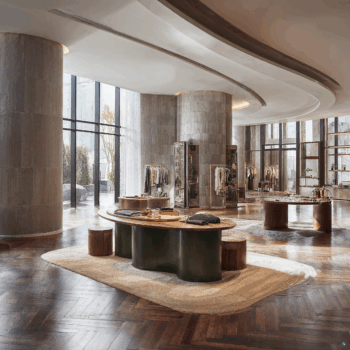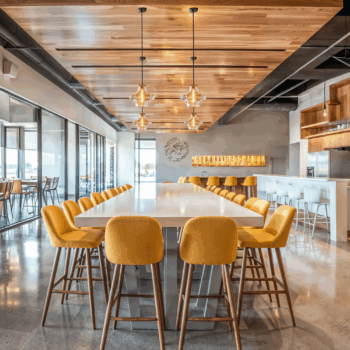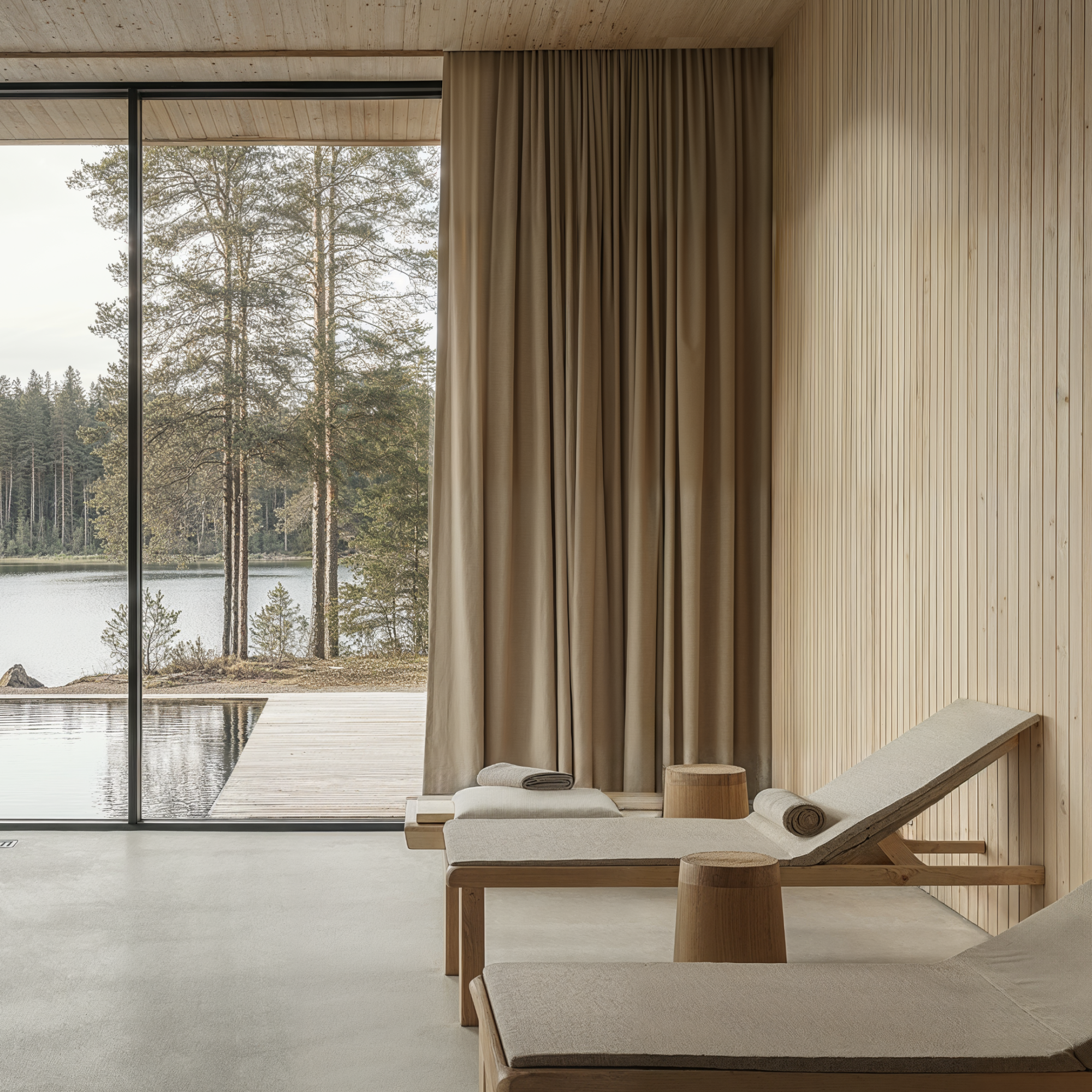
Finnish sauna design is one of the oldest wellness traditions in the world—an integral part of daily life in Finland, where the sauna is seen not as a luxury, but as a necessity. With over two million saunas in a country of just over five million people, this design ethos is rooted in ritual, simplicity, and respect for the human connection to nature. Whether in remote cabins, urban homes, or civic buildings, saunas represent a pause from the pace of modern life, spaces of physical and emotional renewal.
Architecturally, Finnish saunas are characterized by the use of natural woods such as spruce, pine, or cedar, stone heating elements, and clean-lined, compact interiors that promote mental clarity and sensory stillness. The ritual of löyly—the moment when water is thrown over hot stones to release gentle steam—is central to the sauna experience, enhancing thermal contrast and spiritual reset. Combined with soft lighting and quiet acoustics, the sauna becomes a sanctuary that blurs the line between built and natural environments. In contemporary design, these principles translate into residential wellness rooms, spa environments, and biophilic workspaces that embrace calm through material honesty and spatial humility.
The Core Principles of Finnish Sauna Design
1.) Natural Materiality
Softwoods like spruce, cedar, or pine form the interior envelope, offering comfort, durability, and a subtle connection to Nordic forests.
2.) Thermal and Tactile Experience
Stone heating elements and layered benches enhance the contrast between heat, cold, and rest, anchoring the body in cyclical wellness rituals. The steam ritual, or löyly, provides a multisensory experience unique to Finnish tradition.
3.) Spatial Restraint
Simplicity defines the layout—modest, enclosed forms promote focus, stillness, and sensory quietude, with little ornamentation or distraction.
4.) Connection to Landscape
Traditional saunas are often placed near water or natural surroundings, with framed views, natural ventilation, and indoor-outdoor flow that echo biophilic design principles.
5.) Privacy and Reflection
Designed as places of personal and communal reflection, saunas offer soft lighting, acoustical privacy, and a sacred sense of stillness.
Finnish Sauna Design in Practice
Restorative Wellness in Healthcare
Thermally balanced rooms inspired by Finnish sauna design bring warmth and reflection to healthcare spaces, using natural wood, ambient lighting, and stone finishes to reduce stress and promote healing.
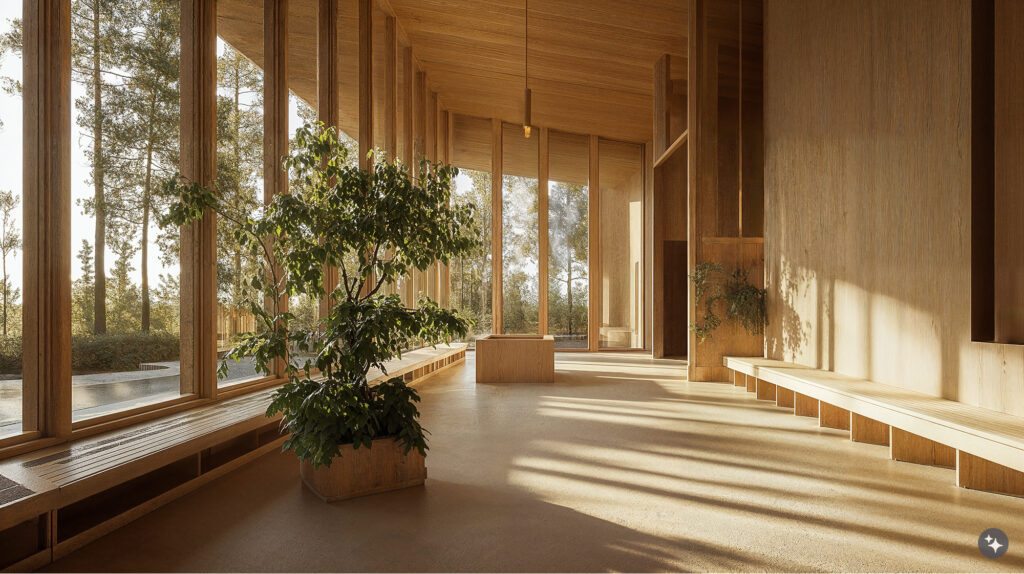
Grounding Elements in the Workplace
Wellness rooms, meditation spaces, or quiet zones in offices draw from sauna architecture through cedar-clad walls, minimal furnishings, and calming acoustics, encouraging rejuvenation and mindful breaks.
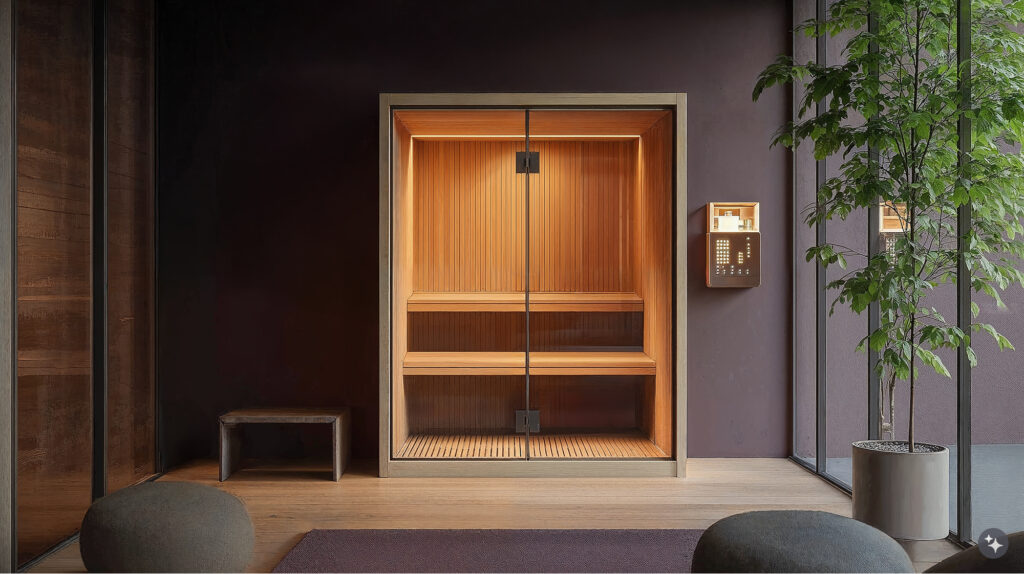
Educational Retreats for Learning Environments
Design studios or faculty lounges incorporate natural materials, soft lighting, and thermal contrast to foster relaxation and focus, turning educational settings into more human-centered spaces.
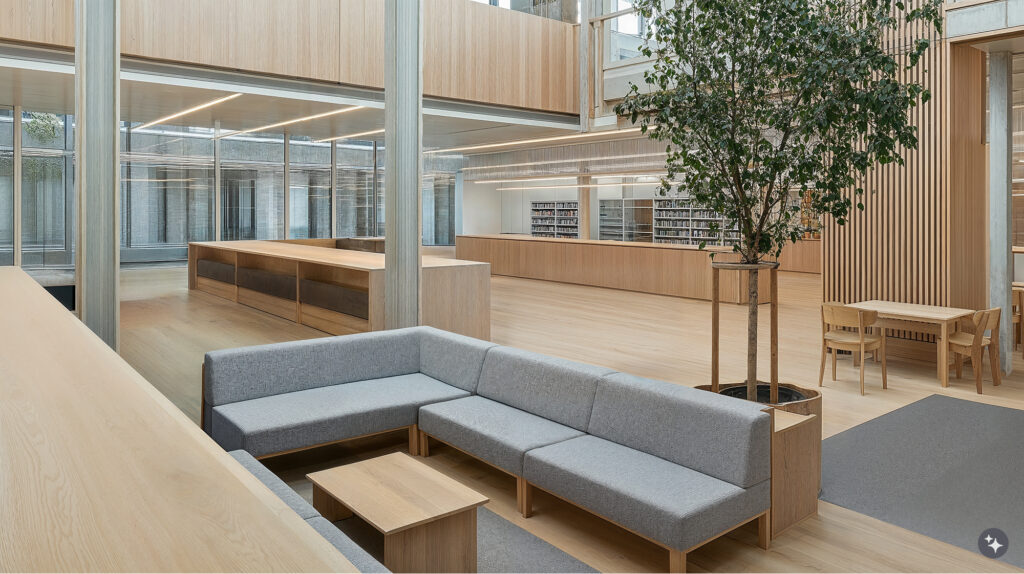
Hospitality Spaces Rooted in Wellness
Hotels and spas reference Finnish sauna principles through low-lit rooms, natural ventilation, and timbered walls, offering guests a sanctuary of calm grounded in cultural tradition.
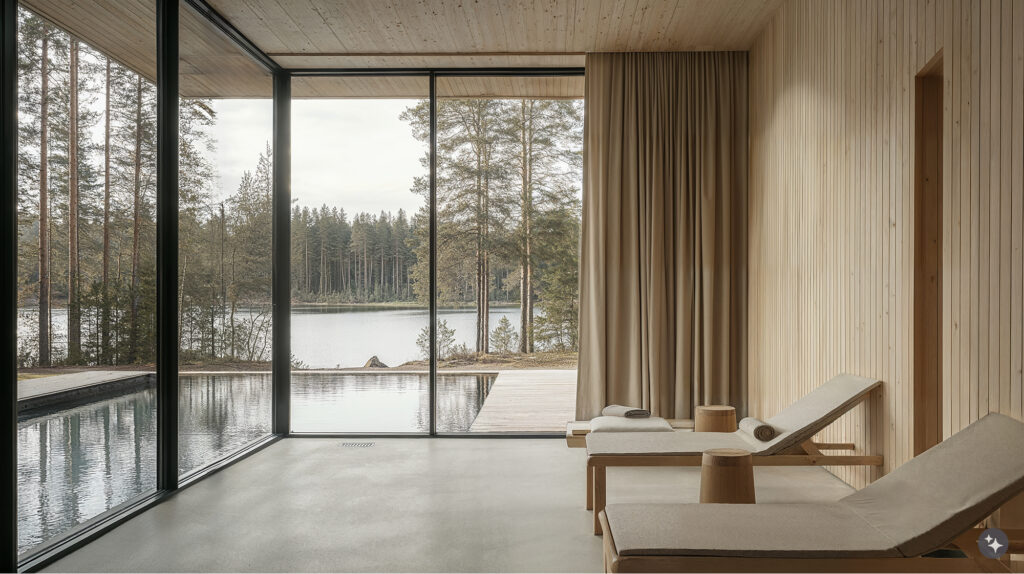
Cultural Spaces Honoring Ritual
Museums, exhibition centers, and cultural institutions can interpret sauna design as a spatial metaphor, embracing restraint, reflection, and the ceremonial quality of material experience.
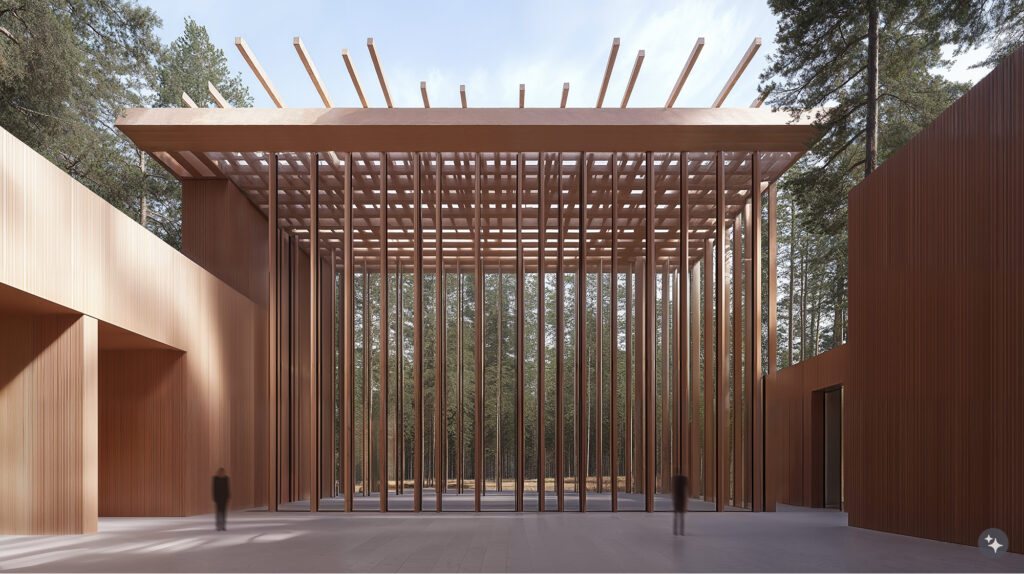
Retail Environments Focused on Sensory Simplicity
Boutique showrooms or retail spaces integrate quiet tonal palettes, wood paneling, and clean forms, allowing products and materials to breathe within serene environments.
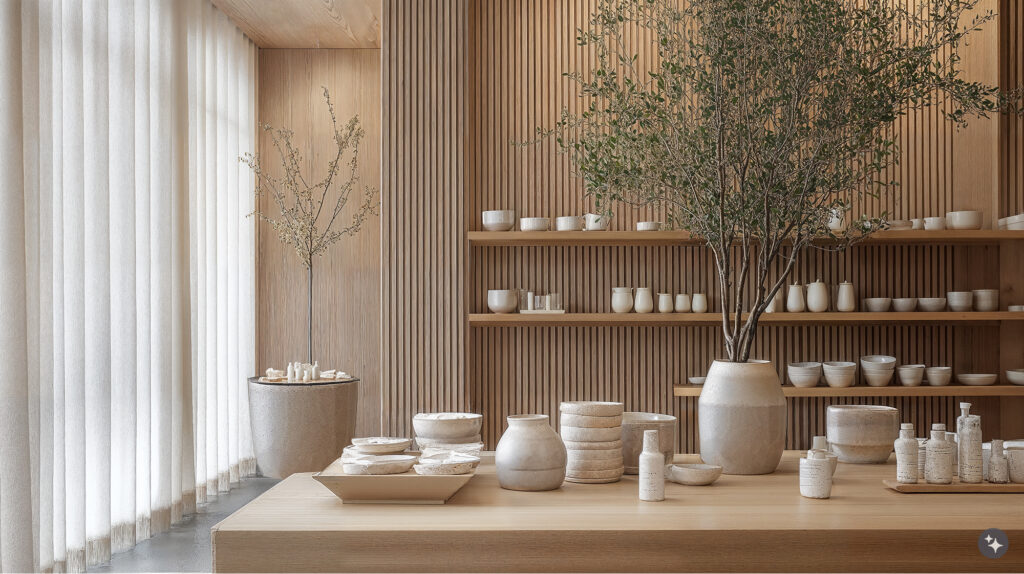
Transit Spaces with Quiet Respite
Lounges and waiting areas can incorporate heat-inspired palettes, acoustic wood cladding, and minimalist seating to evoke a sense of stillness amid movement.
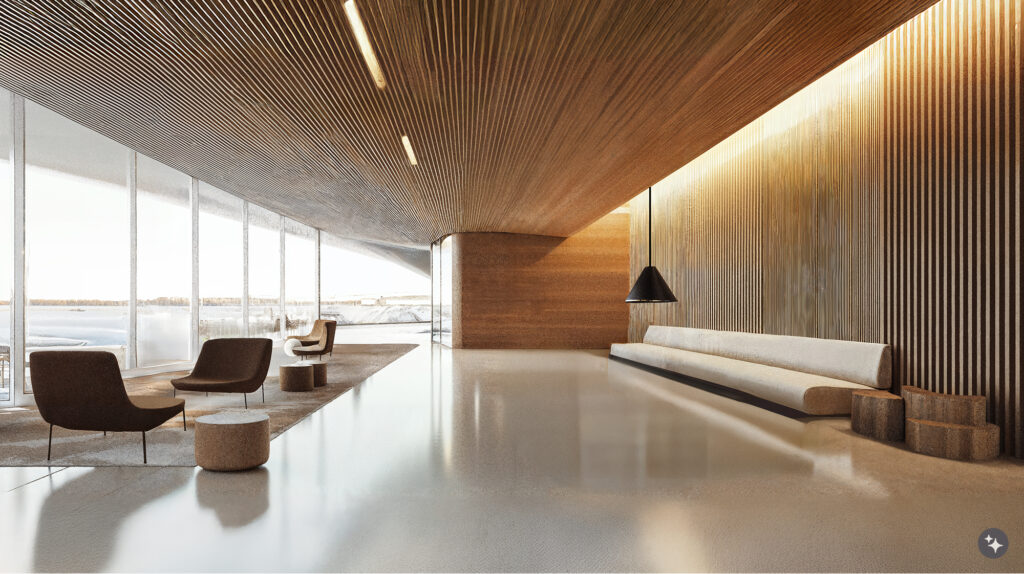
Residential Spaces with Ritual Intent
Homes inspired by Finnish sauna design include wellness nooks, private saunas, and timber-lined baths, inviting a daily rhythm of rest and renewal through design.
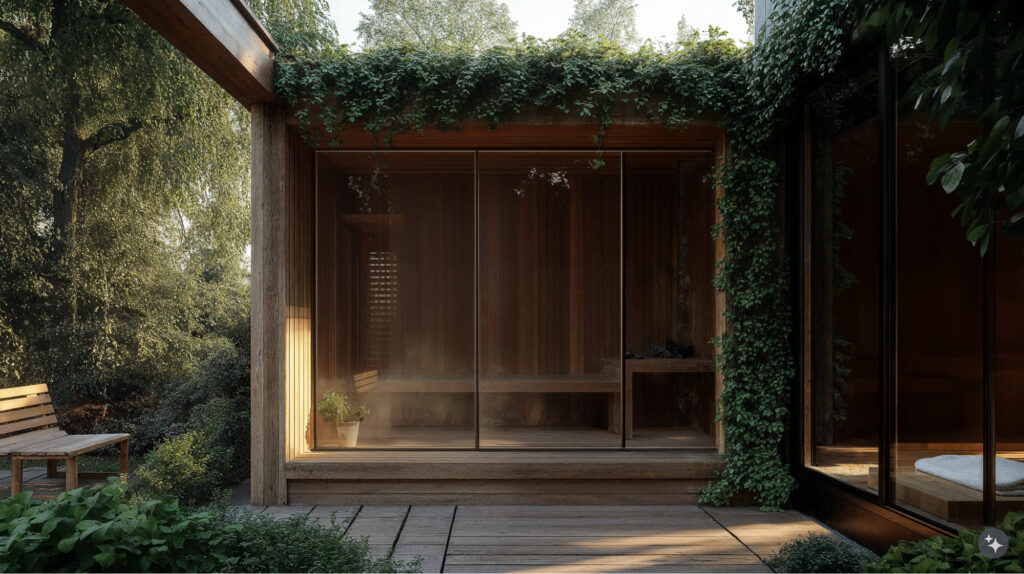
Finnish sauna design offers a compelling reminder that architecture can serve not only function, but ritual. By embracing warmth, material honesty, and quiet reflection, designers can create modern spaces that honor this Nordic tradition, not through imitation, but through shared values of wellness, simplicity, and connection to place.
Looking for more sauna-themed design inspiration? Check out our other article on Finnish Saunas.





